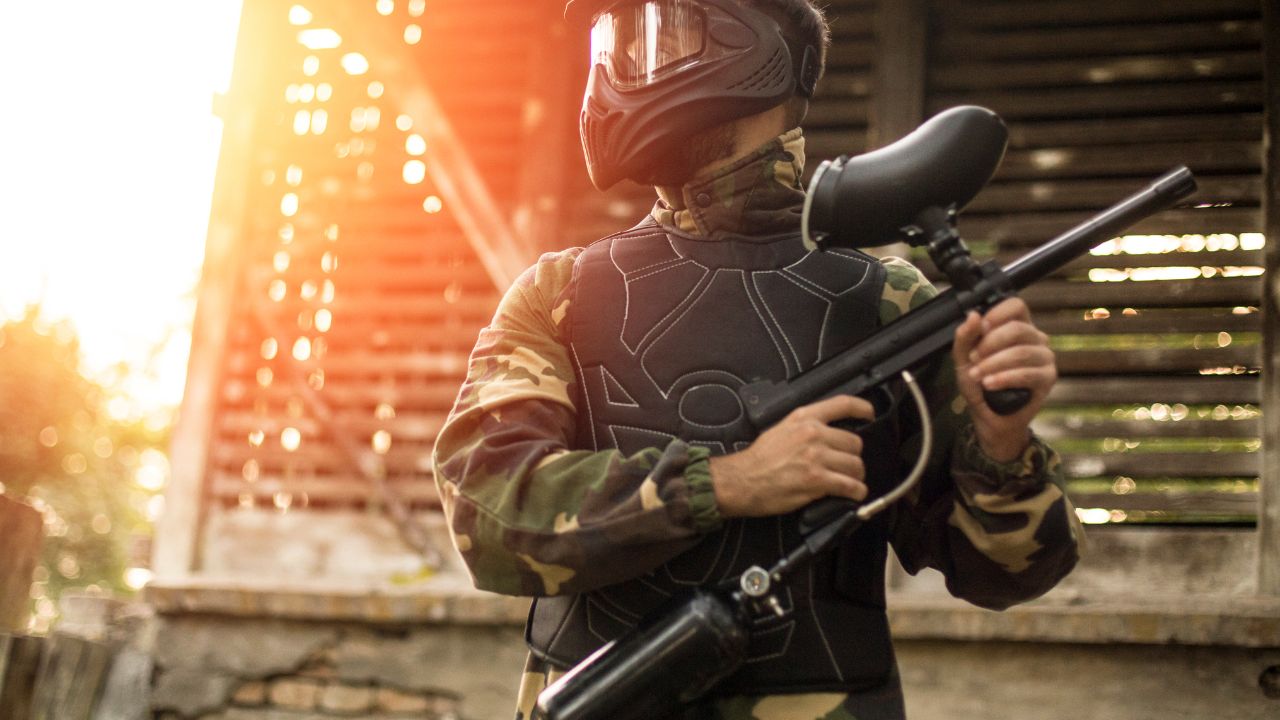When it comes to powering your paintball marker, you have two primary options: CO2 paintball tanks and compressed air (High-Pressure Air or HPA) systems. In this comprehensive comparison, we will explore the characteristics, pros, and cons of CO2 paintball tanks and compressed air systems to help you make an informed choice for your paintball adventures.
Short Answer:
CO2 paintball tanks are cost-effective and widely available but can have inconsistent pressure and reduced performance in cold weather. Compressed air (HPA) systems offer consistent pressure and superior accuracy but are more expensive and require periodic maintenance.

Understanding CO2 Paintball Tanks
CO2 paintball tanks store compressed carbon dioxide gas in liquid form. When the trigger is pulled, the CO2 gas expands, propelling the paintball out of the marker’s barrel. CO2 tanks are available in various sizes, such as 9 oz, 12 oz, 20 oz, and 24 oz, and are relatively affordable compared to compressed air systems.
Pros of CO2 Paintball Tanks:
- Cost-Effective: CO2 tanks are generally more affordable than compressed air systems, making them a budget-friendly option for paintball players.
- Availability: CO2 is widely available at paintball fields, sporting goods stores, and various retailers, making it convenient to get refills.
- Simplicity: CO2 tanks are easy to use and require minimal maintenance, making them suitable for beginners and casual players.
Cons of CO2 Paintball Tanks:
- Inconsistent Pressure: CO2 tanks provide inconsistent pressure as the liquid CO2 changes to gas during use. This fluctuation can affect the velocity and accuracy of paintballs.
- Temperature Sensitivity: CO2 tanks are sensitive to temperature changes. In cold weather, the gas may not expand efficiently, leading to velocity fluctuations and reduced shot accuracy.
- Limited Shots per Fill: CO2 tanks have a lower shot count compared to compressed air systems, which means more frequent refills are necessary during gameplay.
Understanding Compressed Air (HPA) Systems
Compressed air, also known as High-Pressure Air (HPA) or Nitrogen, utilizes compressed air stored in a tank. Unlike CO2, compressed air remains in its gaseous state and maintains a consistent pressure throughout its usage. HPA tanks come in various sizes, such as 48 cu in, 68 cu in, and 88 cu in, and are typically more expensive than CO2 tanks.
Pros of Compressed Air (HPA) Systems:
- Consistent Pressure: Compressed air systems provide a stable and consistent pressure, resulting in more reliable and accurate shots.
- Temperature Insensitivity: HPA tanks are not affected by temperature changes, making them ideal for use in all weather conditions.
- Efficiency: Compressed air is more air-efficient than CO2, allowing for a higher shot count per fill and fewer refills during gameplay.
Cons of Compressed Air (HPA) Systems:
- Higher Cost: HPA systems are generally more expensive than CO2 tanks, which may be a deterrent for budget-conscious players.
- Refill Stations: While HPA refill stations are becoming more common, they may not be as readily available as CO2 refill stations in some locations.
- Maintenance: HPA tanks require periodic hydrostatic testing to ensure safety and compliance with regulations, adding to the overall cost of ownership.
Performance Comparison
1. Consistency and Accuracy
One of the significant advantages of compressed air (HPA) systems is their consistency in providing a stable air pressure. This consistency results in more accurate shots, as the velocity of the paintballs remains uniform. In contrast, CO2 tanks exhibit velocity fluctuations due to the changing state of CO2 from liquid to gas, leading to varying shot trajectories and reduced accuracy.
2. Efficiency and Shot Count
Compressed air systems are more air-efficient than CO2 tanks, allowing for a higher shot count per fill. HPA tanks can provide up to twice the number of shots compared to similarly sized CO2 tanks. This efficiency can be particularly advantageous during extended gameplay or scenarios where refills may be challenging to access.
3. Weather Performance
CO2 tanks are sensitive to temperature changes, especially in colder weather. In chilly conditions, the expansion of CO2 gas may be inconsistent, leading to decreased velocity and reduced performance. Compressed air systems, being temperature-insensitive, maintain consistent pressure regardless of the weather, ensuring reliable and predictable shots.
Suitability for Different Playing Styles
The choice between CO2 paintball tanks and compressed air (HPA) systems can be influenced by your playing style and preferences.
CO2 Paintball Tanks are Suitable for:
- Casual and recreational players on a budget.
- Shorter games or scenarios with frequent breaks and opportunities for refills.
- Players who prioritize simplicity and ease of use over advanced performance.
Compressed Air (HPA) Systems are Suitable for:
- Competitive and experienced players seeking consistent and accurate shots.
- Extended gameplay or scenarios where refills may not be readily available.
- Players who prioritize efficiency and shot count for prolonged engagements.
Final Thoughts:
Ultimately, the best choice for your paintball marker will depend on your specific needs and preferences. By understanding the characteristics and pros and cons of both CO2 paintball tanks and compressed air (HPA) systems, you can make an informed decision that enhances your performance and enjoyment on the paintball field.
